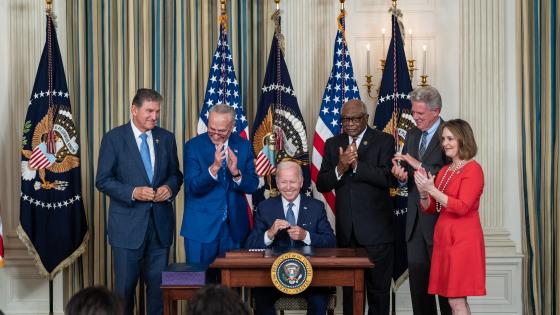If media coverage is anything to go by, October 2010 saw a resurgence of fears about protectionism. Concerns that unheeded complaints about the Chinese exchange-rate regime would ultimately provoke other countries to resort to competitive devaluations and more traditional forms of trade protectionism came to the fore. Protectionism has not received this much attention in the press since the first quarter of 2009.
The high profile given to this matter in the recent weeks is no coincidence. For sure, the US Congress has debated this matter in the past and US officials have sought to raise this matter with their Chinese counterparts. By insisting that this matter be discussed at a preparatory G20 meeting of Finance Ministers and Central Bankers, however, the US government ensured the matter would receive substantial attention in policy, media, and other circles.
Tensions contained… for now
The suspicion that other countries, including Korea (the G20 hosts), Japan, and Switzerland among others, had been motivated by commercial considerations when they intervened in the foreign currency markets raised fears that a (albeit sizeable) bilateral dispute might be taking on systemic dimensions. That, plus the unhappy precedents of rival competitive devaluations in the 1930s and the prospect of monetary policy easing in the US in the near term, further contributed to the profile given to protectionism in its different forms in the past few weeks.
Until last weekend it looked as if some accommodation between the Chinese and US government had been struck in the run up to the G20 summit. Part of that accommodation seemed to involve shifting the focus away from the value of bilateral exchange rates to current-account imbalances, which are influenced by a number of policy measures1. However, senior Chinese officials have repudiated the US approach and we now approach the first crisis-era G20 summit with little clear expectation of the trade-related outcomes.
Although extreme public outbreaks of protectionism have been avoided, there is still the danger that less transparent – or murkier – forms of protectionism could have been used to target countries with aberrant exchange-rate regimes or large current-account surpluses. The latest data from the GTA do not find unusually active targeting of such countries in recent months. The number of times that China and Germany's foreign commercial interests have been hit in recent months is at a lower rate than before. Overall, then, the so-called currency war (as the Brazilian Finance Minister termed it) has not yet translated into an outbreak of protectionism, murky or otherwise.
Still, many have rightfully called for greater vigilance on the part of senior policymakers. The solution for global imbalances lies elsewhere. But such solutions require a willingness to alter domestic policies, often against the interests of certain entrenched groups. Continued stalemate in domestic reform initiatives comes at a price. The status quo is not a viable alternative, for as we have seen the pressure for adjustment will be eventually channelled into ways that threaten the open trading system.
Looking forward, the US Federal Reserve Board's recent decision to accelerate Quantitative Easing will almost certainly inflame tensions in the coming year. A sharp fall in the US dollar, coupled with a tiny devaluation of the Chinese renminbi and other East Asian currencies against the US dollar, would imply that import competing firms in South Asia, Latin America, and Europe would come under considerable pressure from a wave of American and East Asian imports.
In Europe, in particular, the combination of continuing fiscal austerity and an unaccommodating European Central Bank leaves European policymakers with few tools to support national firms other than protectionism. Further tests of resolve against protectionism should be expected in 2011 in Europe and elsewhere. Tensions may have been contained, but only for now.
Assessing G20 leadership on protectionism
While praise is due for containing currency-related protectionist tensions, this should not overshadow the fact that the governments around the world continue to progressively close their markets to international competition. As demonstrated in the global overview chapter of the Eighth GTA report, the accelerated rate of implementing protectionist measures – that began in the first quarter of 2009 – continues. More evidence confirms the fact that between 100-120 state measures are implemented every quarter by governments worldwide that discriminate against foreign commercial interests. As world trade recovered in early 2010, there is no evidence of a corresponding slowdown in protectionism.
The G20 continues to contribute the lion's share of worldwide protectionism. Since the G20 summit in Toronto, Canada, in June 2010, in total the G20 governments have implemented 111 measures that harm foreign commercial interests. For the first time, the total number of harmful measures implemented by G20 governments during the crisis and subsequent recovery has exceeded 500 (511 to be precise). The crossing of this dubious threshold casts further doubt on the quality of G20 leadership on protectionism.
In fact, arguably matters are worse as many non-G20 countries have engaged in a burst tariff-cutting over the summer of 2010 and in recent months. Since the June 2010 G20 summit the GTA team found 100 tariff measures have been implemented and only a quarter of them are almost certainly protectionist. Most of the tariff cuts are by developing countries in equipment, parts, and components – suggesting that arguments for opening borders can still persuade policymakers. Indeed, it seems there is plenty that some of the non-invitees to the Seoul Summit could teach the invited.
Of course, there is variation across the G20 in their willingness to resist protectionism. Table 1.1 below reproduces our list of the top 10 most protectionist jurisdictions, evaluated on four different metrics. Once again, certain medium- and large-sized emerging markets and European nations dominate these negative rankings. Most – but certainly not all – of these worst offending nations are G20 members.
Table 1.1 Which countries have inflicted the most harm? Certain emerging markets and European nations
|
Rank
|
Metric, Country in specified rank, Number
|
|
|
Ranked by number of (almost certainly) discriminatory measures imposed
|
Ranked by the number of tariff lines (product categories) affected by (almost certainly) discriminatory measures
|
Ranked by the number of sectors affected by (almost certainly) discriminatory measures
|
Ranked by the number of trading partners affected by (almost certainly) discriminatory measures
|
|
|
1.
|
EU27 (166)
|
Vietnam (926)
|
Algeria (67)
|
Argentina (174)
|
|
|
2.
|
Russian Federation (85)
|
Venezuela (785)
|
EU27 (57)
|
EU27 (168)
|
|
|
3.
|
Argentina (52)
|
Kazakhstan (723)
|
Nigeria (45)
|
China (160)
|
|
|
4.
|
India (47)
|
Nigeria (599)
|
Venezuela (38)
Vietnam (38)
|
Indonesia (151)
|
|
|
5.
|
Germany (35)
|
Algeria (476)
|
Vietnam (148)
|
|
|
6.
|
Brazil (32)
|
EU27 (467)
|
Germany (36)
Kazakhstan (36)
Russian Federation (36)
|
India (145)
|
|
Russian Federation (143)
|
|
7.
|
UK (31)
|
Russian Federation (426)
|
|
Finland (132)
Germany (132)
South Africa (132)
|
|
8.
|
Spain (25)
|
Argentina (396)
|
|
|
9.
|
Indonesia (24)
Italy (24)
|
India (365)
|
Ethiopia (32)
India (32)
|
|
|
10.
|
Indonesia (347)
|
|
Note: There is no single metric to evaluate harm. Different policy measures affect different numbers of products, economic sectors, and trading partners. GTA reports four measures of harm.
The Korean hosts of the forthcoming G20 summit – apparently with the support of other governments – is seeking a consensus to alter the mix of support offered to developing countries (Oliver and Giles 2010). The proposal in question calls for more emphasis on trade and investment assistance – to foster the business environment in developing countries – and less on direct financial aid.
"Do no harm": A G20 trade and development initiative with bite
Given the G20's greater interest in development policy and its linkages to trade, the Eighth GTA Report dedicates a chapter to examining the effects of the state measures implemented by the G20 governments during the crisis and recovery phase on the most vulnerable developing countries. Table 2 summarises the main findings. Worldwide, 141 government measures have hurt the traders and migrant workers of the least developed countries. The G20 countries are responsible for 101 of those harmful measures – and it is the developing country members of the G20 that have harmed their poorer brethren the most. Further analysis reveals that India has harmed least developed countries commercial interests no less than 21 times, much more than any other G20 member.
Any G20 initiative on trade and development ought, at a minimum, to revise the implementation of the government measures so that they do not harm the Least Developed Countries. "Do no harm" would succinctly describe such an initiative. Otherwise, the Seoul G20 summit risks introducing yet more incoherence into trade and development policy – reviving long-standing concerns that many what governments give with one hand (aid and other support) they take away with the other (protectionism.)
Just because a currency-induced trade war has been averted does not excuse G20 governments from their sustained, lower-profile steps that disengage their firms from world markets. Together the G20 has repeatedly failed to deliver on their “no protectionism” pledges. To this poor track record, they now propose to make reforms to trade and development policies. The harm done by the G20 members – in particular, India, Argentina, and Russia – to the commercial interests of the most vulnerable developing countries on Earth exemplifies the incoherence at the core of the G20's deliberations. "Do no harm" would be a far better basis upon which to launch an initiative to promote prosperity in the Least Developed Countries.
Table 2. Whose government policies have harmed the Least Developed Countries since the first G20 crisis-related meeting in November 2008?
|
Class of countries
|
Total number of harmful 2 measures implemented by this class against Least Developed Countries |
|
Worldwide
|
141
|
|
G20 members
|
101
|
|
Non-OECD members
|
108
|
|
G20 Non-OECD members
|
70
|
|
Least Developed Countries
|
4
|
Source: Global Trade Alert, data extracted 1 November 2010.
Printed copies of this report will be available in 2-3 weeks and will retail for £25. To pre-order a copy at a 40% discount off the full retail price, click here.
The PDF of the report can be downloaded from the Global Trade Alert website.
References
Claessens, Stijn, Simon J Evenett, and Bernard M Hoekman (eds.), Rebalancing the Global Economy: A Primer for Policymakers, A VoxEU.org Publication, 23 June.
Evenett, Simon J (2009a), "What can be learned from crisis-era protectionism? An Initial Assessment", Business & Politics, October.
Evenett, Simon J (2009b), "Crisis-era protectionism one year after the Washington G20 meeting: A GTA update, some new analysis, and a few words of caution", in Richard Baldwin (ed.), The Great Trade Collapse: Causes, Consequences and Prospects, A VoxEU.org Publication, 27 November.
Oliver, Christian and Chris Giles (2010), "South Korea presses for policy shift over aid", Financial Times, 5 November.
1 Many of the contributors to Claessens et al. (2010) identify different contributing factors to current levels of global imbalances.
2 Harmful measures are taken to be implemented measures classified as red or amber. Therefore, these totals do not include potentially harmful measures that have been announced but have not yet been implemented.


